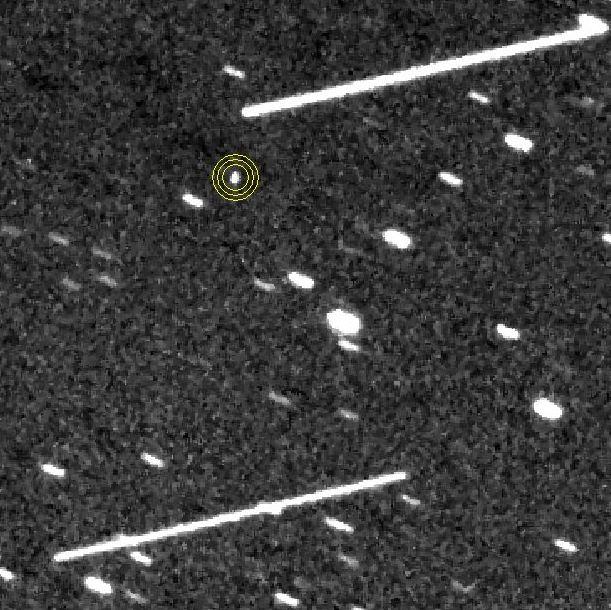Return of asteroid 2012 TC4: a very special visit!
There are millions of asteroids in our solar system. While most of them reside in the asteroid belt between Mars and Jupiter, others have eccentric orbits that bring them closer to Earth. One such asteroid is 2012 TC4. Five years after being discovered with a large telescope in Maui, Hawaii, this asteroid is once again in the vicinity of our planet in early October.

This image captured by NEOSSat on October 11, 2017, shows the 2012 TC4 asteroid in the center (encircled), at a distance of 439,000 km from Earth. Since NEOSSat focused on the moving asteroid, the background stars appear streaked. The two bright lines are geostationary satellites in the foreground. (Credits: Canadian Space Agency, Defence Research and Development Canada)
Experts agree that the asteroid will pass rather far from Earth: at its closest, on October 12 at 1:40 am ET, it will be around 44,000 km away. Nonetheless, the flyby of this asteroid of approximately 12 metres in diameter is generating much interest in the scientific community. Needless to say, ground-based observation tools from all over the world are watching its every move. NASA and the European Space Agency will in fact use this flyby to test the worldwide asteroid detection and tracking network in collaboration with several observatories and the University of Maryland, in the United States.
NEOSSat, the Canadian space telescope orbiting about 800 km above the Earth, is too carefully tracking the asteroid's journey. Unlike ground-based telescopes that can only observe a portion of the sky and can only be used at night, NEOSSat tracks space objects regardless of geographic location, day-night cycle or weather conditions. NEOSSat is expected to be able to capture many images per day of Asteroid 2012 TC4 that will enable scientists to better determine its orbit and find out more about its trajectory. It will, in turn, help us predict when the asteroid will make future close passes.
We'll also potentially gain more knowledge about the evolution of our solar system, the formation of the planets, and even how asteroids could have contributed to the origin of life on Earth. Given everything we stand to learn, this will be a very special visit indeed!
Explore further
- What is an asteroid?
- NEOSSat: Canada's sentinel in the sky
- Illustration: Comet, meteorite or asteroid?
- Date modified: